Research
“Research project 1: The diversity of microbial rhodopsins and their molecular mechanisms”
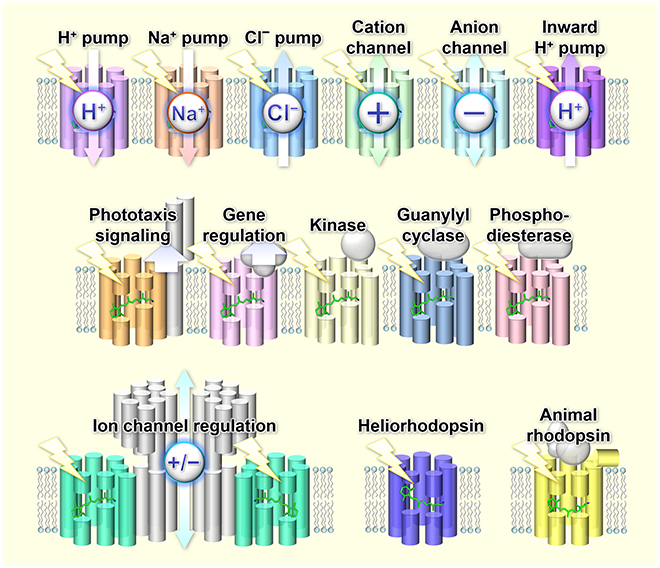
Microbial rhodopsins are photoreceptive membrane proteins present in bacteria,
archaea, micro-eukaryotic organisms (algae, protozoa and fungi), and giant
viruses. Although microbial rhodopsins bind retinal chromophore which is
same as animal rhodopsins present in our body, their biological function
is completely different. The most abundant microbial rhodopsin is light-driven
outward proton pump. In this century, however, due to the recent progress
on the genomic analysis technique, especially next-generation sequencers,
many microbial rhodopsins having various functions have been reported in
recent years: inward chloride pump, inward proton pump, outward sodium
pump, phototactic sensors, light-gated cation/anion channels, light-controlled
enzymes and so on. We are exploring novel functional rhodopsins from micro-organisms
around the world. We are also investigating the molecular mechanism how
the various functions are being achieved on the basis of common seven-transmembrane
scaffold of microbial rhodopsins in which retinal bound by unifying spectroscopic
analysis on molecular dynamics and structures, molecular biological techniques
and bioinformatics approach.
“Research project 2: Study on animal rhodopsins”
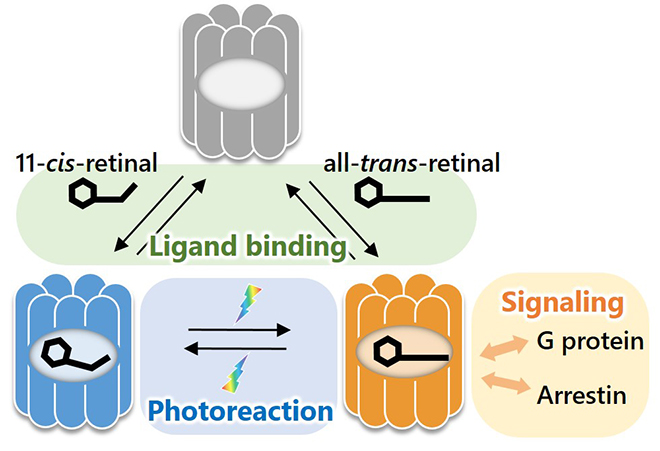
To obtain various information on natural environments, animals have evolved various photosensitive systems, including visual systems, most of which employ animal-type rhodopsins as light sensors. In visual systems, the chromophore retinal of visual rhodopsin in photoreceptor cells absorbs light and isomerizes, resulting in a conformational change of the rhodopsin and formation of its active state. Intracellular signaling proteins involved in the phototransduction cascade detect the active state of rhodopsin and cause electrical changes in the photoreceptor. Recent advances in genetic analyses have revealed numerous rhodopsin genes from various animals, which include new rhodopsins that have different properties from those of well-studied visual rhodopsins. Recently, research groups including us reported rhodopsins that have a new property of being activated before light absorption and inactivated by light. Although various properties of animal rhodopsins have been reported so far, few studies have investigated molecular mechanisms by which such differences in properties are produced. We aim to advance the understanding of the diversity and commonality of molecular mechanisms in animal rhodopsins with spectroscopic analyses on molecular dynamics and structures in combination with molecular biological techniques.
“Research project 3: Study on optogenetics”
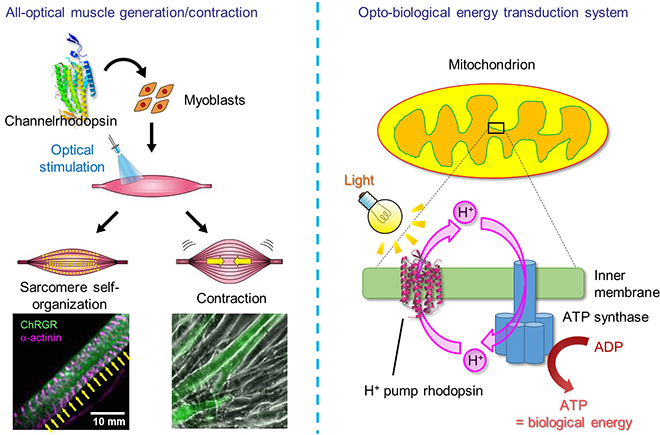
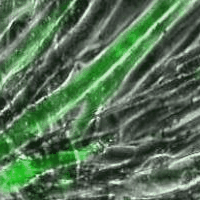 Optical muscle contraction
Optical muscle contraction
Living organisms sense light by various means and control their behavior accordingly. For example, one of green algae, Chlamydomonas reinhardtii, uses channelrhodopsins for its light-dependent behaviors such as phototaxis. Previously we genetically engineered neurons in the mouse brain to express one of channelrhodopsins for the first time and made them to be excitable by light. Further breakthrough, which is the combination of optical manipulation/measurement of biological activities and genetic engineering technologies, is progressing under the name of optogenetics. We are aiming to apply the light-sensing proteins of various living organisms such as microbial/animal rhodopsins and their artificial variants for the next-generation optogenetics to investigate what is Life, the dynamics of materials, energy and information. We will create the organisms which are endowed with new abilities, such as an animal which can use light for its energy, to challenge the global problems such as energy crisis, starvation and climate change. Medical application of our techniques of optical manipulation of cell functions/metabolism would be prospected to solve the problems, such as cancer, aging and any incurable diseases.
“Research project 4: Optical observation and regulation of membrane potential in plant”
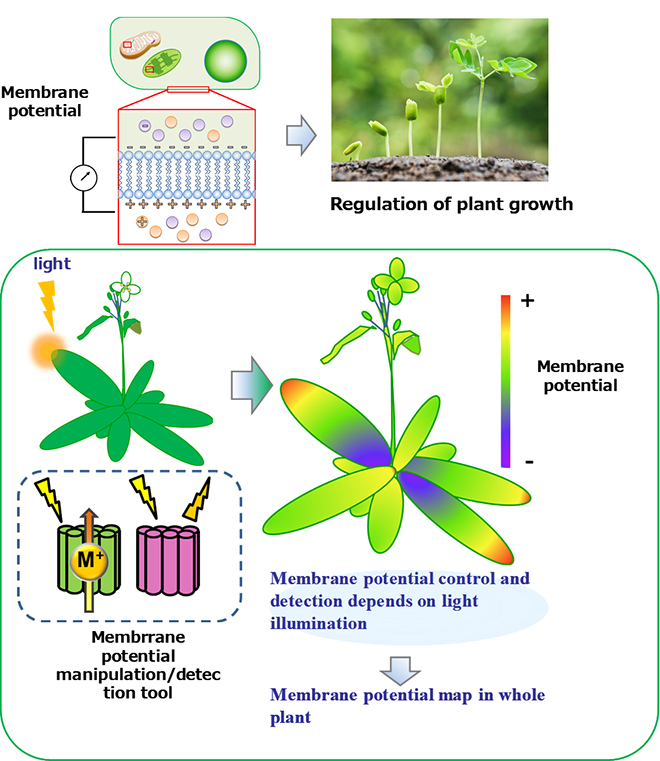
The immobility of plants brings a disadvantage to themselves that they are unable to escape any undesired environmental changes like other organisms, such as animals. In order to overcome this disadvantage, plants can flexibly change their morphology and physiological activity responding the environmental stimuli which they received. Membrane potential is one of the important signals involved in various physiological responses in plants, such as stomatal opening and closing, defense response, morphogenesis and transport of nutrients and metabolites. Optogenetics is a powerful technique to control membrane potential generation and manipulate its signal transduction by light. In animal cells, especially neurons, the details of membrane potential generation have been clarified by optogenetic approach. In this project, a membrane potential manipulation tool derived from microbial rhodopsin and a membrane potential sensitive protein are introduced into Arabidopsis thaliana, and the membrane potential of the plant are controlled by “All-optical” electrophysiology, which performs both membrane potential manipulation and detection by light. We will challenge to develop technology to control the membrane potential in plant.